Kashi Vishwanath Temple, located in the ancient city of Varanasi (also known as Kashi), is one of the most revered Hindu temples dedicated to Lord Shiva. Kashi Vishwanath Temple is one of the twelve Jyotirlingas and Kashi Nagri is one of Saptapuri. This iconic temple, often referred to as the Golden Temple due to its golden spire, stands as a beacon of spirituality and devotion. Nestled on the western bank of the holy Ganges River, Kashi Vishwanath attracts millions of pilgrims and tourists from around the world.
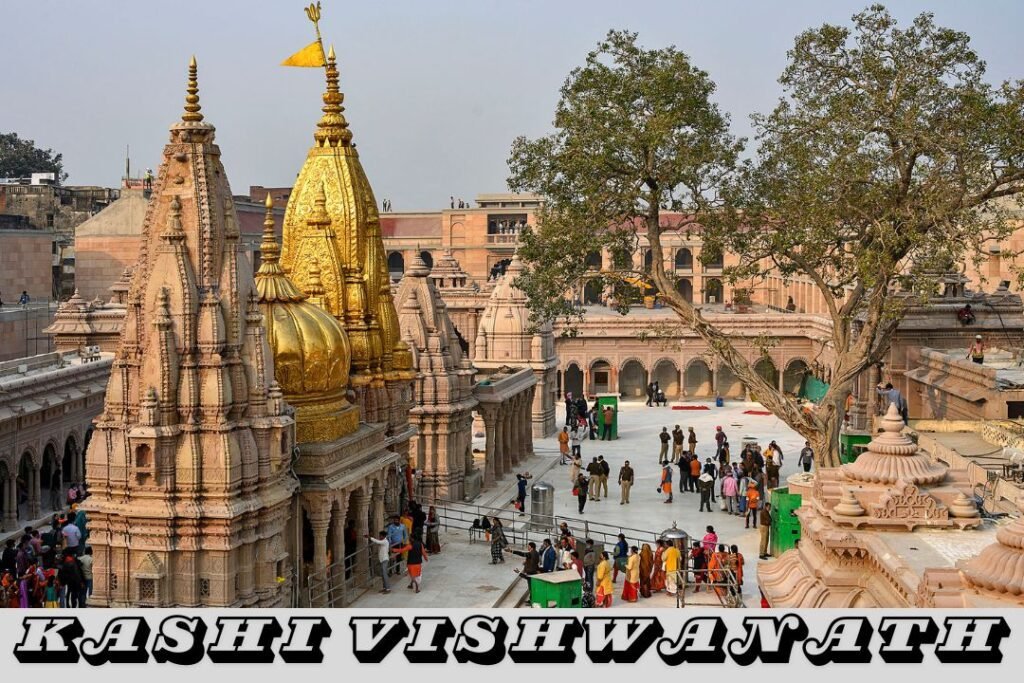
Table of Contents
Key Points
Historical Significance
Ancient Origins
The origins of Kashi Vishwanath are steeped in antiquity, with references to the temple found in ancient Hindu scriptures like the Puranas and the Mahabharata. It is believed that the original temple was constructed by the Hindu sage Vyasa, the author of the Mahabharata, but it has undergone numerous reconstructions over the millennia.
Repeated Destruction and Reconstruction
The temple has a tumultuous history, having been destroyed and rebuilt multiple times. The most notable destruction occurred in the 11th century by the orders of the Muslim ruler Qutb-ud-din Aibak. It was subsequently rebuilt by various Hindu kings, only to be demolished again by different invaders. The current structure was erected by Maharani Ahilya Bai Holkar of Indore in 1780.
Architectural Marvel
Design and Structure
The architecture of Kashi Vishwanath is a splendid blend of traditional Hindu temple design, characterized by its intricate carvings, majestic domes, and the striking gold-plated spire that towers over the temple. The temple complex is a labyrinth of small shrines, each dedicated to various deities, enhancing the spiritual atmosphere.
Golden Spire and Dome
The most distinguishing feature of the temple is its golden spire and dome, donated by Maharaja Ranjit Singh of Punjab in 1835. The gold plating, weighing around 1 ton, makes the temple shimmer in the sunlight, symbolizing its divine aura.
Sanctum Sanctorum
The heart of Kashi Vishwanath is the sanctum sanctorum, which houses the revered Jyotirlinga. This sacred Shiva Lingam is believed to be one of the 12 Jyotirlingas in India, representing the infinite nature of Lord Shiva.


Spiritual Significance
The City of Light
Varanasi, also known as Kashi, is referred to as the “City of Light.” It is believed that this city was founded by Lord Shiva himself, making it one of the most sacred places for Hindus. The Kashi Vishwanath Temple is at the core of this spiritual epicenter.
The Importance of the Jyotirlinga
The Jyotirlinga at Kashi Vishwanath symbolizes the “pillar of light” or the “pillar of energy,” representing the infinite and all-encompassing nature of Lord Shiva. Pilgrims believe that a visit to this temple and a dip in the Ganges can cleanse one’s sins and grant liberation (moksha).
Pilgrimage and Rituals
Kashi Vishwanath is a major pilgrimage site, attracting devotees who come to seek blessings and offer prayers. The temple follows a strict schedule of rituals, including the Mangala Aarti, Bhog Aarti, Sandhya Aarti, Shringar Aarti, and Shayan Aarti. These rituals involve elaborate offerings, chants, and ceremonies that create a profound spiritual experience for visitors.
- Mangala Aarti: The day at Kashi Vishwanath begins with the Mangala Aarti, a pre-dawn ritual that starts around 3 AM. This aarti is a mesmerizing experience where the temple is adorned with lights, and priests chant Vedic hymns to awaken the deity.
- Bhog Aarti: The Bhog Aarti is performed around noon, offering various food items to the deity. Devotees can participate in this ritual by purchasing tickets, which allow them to witness the offering ceremony.
- Sandhya Aarti: The evening aarti, known as Sandhya Aarti, takes place at sunset. This ritual involves the offering of lamps, incense, and flowers, creating a divine atmosphere filled with devotion.
- Shringar Aarti: The Shringar Aarti is performed in the late evening, where the deity is adorned with beautiful clothes and jewelry. This aarti showcases the grandeur and splendor of the temple and is a visual treat for devotees.
- Shayan Aarti: The final aarti of the day, Shayan Aarti, is performed at night before the temple closes. This ritual is intended to put the deity to rest and involves chants and prayers for a peaceful night.
Surrounding Attractions of Kashi Vishwanath
Gyanvapi Well
Located within the temple complex, the Gyanvapi Well is believed to have been created by Lord Shiva himself. According to legend, during the temple’s destruction, the Jyotirlinga was hidden in the well to protect it from invaders.
Annapurna Temple
Adjacent to Kashi Vishwanath, the Annapurna Temple is dedicated to Goddess Annapurna, the deity of food and nourishment. The temple plays a significant role in the daily rituals and is a vital part of the temple complex.
Kaal Bhairav Temple

Deity: The temple is dedicated to Kaal Bhairav, a fierce manifestation of Lord Shiva, known as the guardian of Varanasi.
Significance: Kaal Bhairav is believed to be the Kotwal (chief guardian) of Varanasi. Devotees believe that no one can stay in Varanasi without his permission.
Architecture: The temple features a striking image of Kaal Bhairav, adorned with a garland of skulls and a weapon in his hand.
Rituals: Devotees offer black sesame seeds, mustard oil, and coconuts to appease the deity.
Location: It is located in the heart of the city, making it accessible for pilgrims visiting Kashi Vishwanath.
Dashashwamedh Ghat
Significance: Dashashwamedh Ghat is one of the oldest and most significant ghats in Varanasi. It is believed that Lord Brahma built this ghat to welcome Lord Shiva.
Ganga Aarti: The ghat is famous for the daily evening Ganga Aarti, a spectacular ceremony where priests perform rituals with lamps and chant prayers to honor the Ganges.
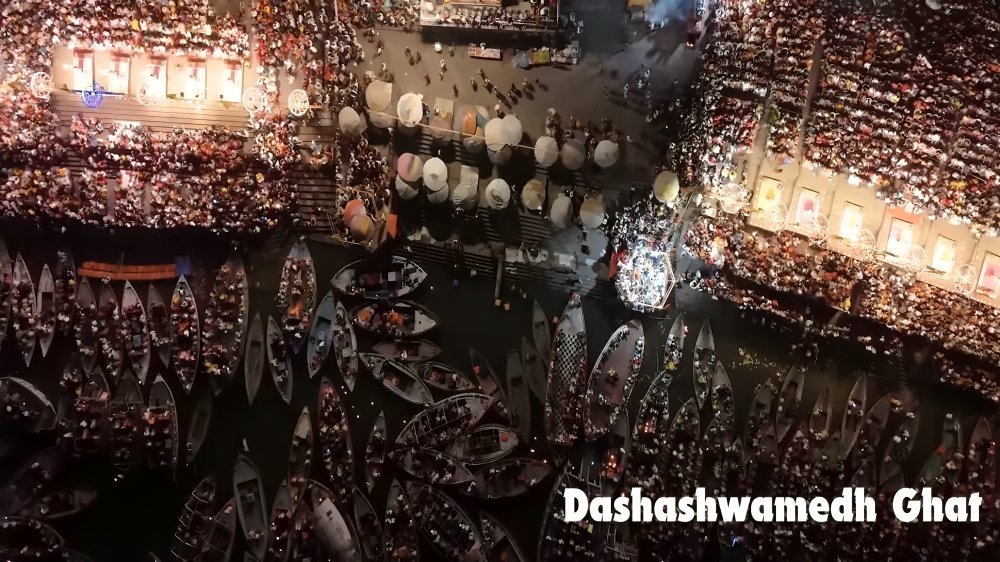
Location: Situated close to the Kashi Vishwanath Temple, it is easily accessible for pilgrims and tourists.
Activities: Apart from witnessing the aarti, visitors can take boat rides, enjoy the scenic beauty, and observe various religious rituals being performed.
Cultural Hub: The ghat is a vibrant cultural hub with numerous vendors, sadhus (holy men), and pilgrims creating a lively atmosphere.
Ganga Aarti
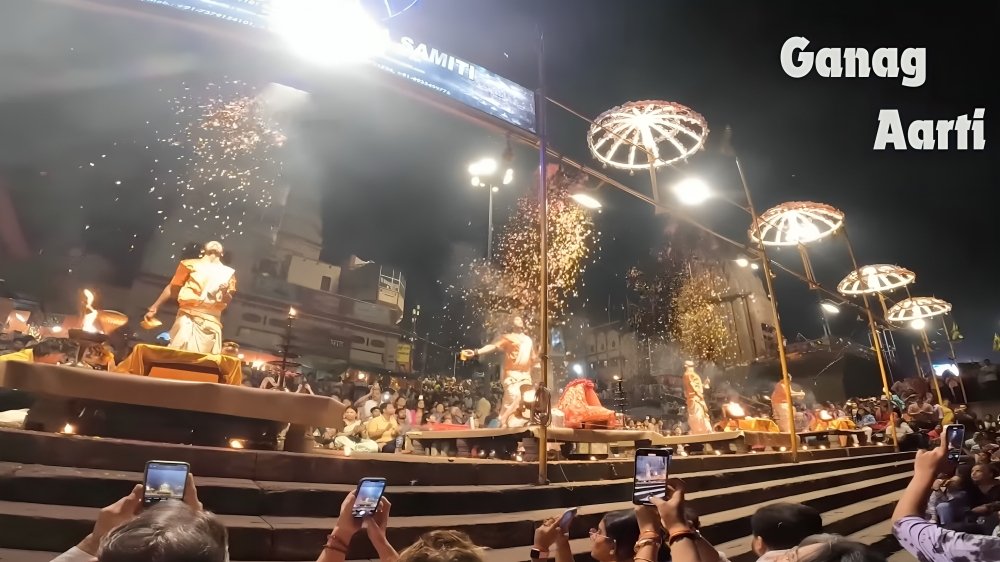
Spiritual Experience: Witnessing the aarti is considered a profound spiritual experience, attracting devotees and tourists alike.
Participation: Visitors can participate by offering flowers, lighting lamps, and joining the chants.
Boat View: Many people prefer to watch the aarti from boats on the river, providing a unique perspective.
Ceremony: The Ganga Aarti is a daily evening ritual performed at Dashashwamedh Ghat to honor the Ganges River.
Visual Spectacle: The ceremony involves priests holding large fire lamps, chanting hymns, and performing synchronized movements.

Durgakund Temple
Deity: The temple is dedicated to Goddess Durga, the divine mother and protector.
Architecture: Built in the Nagara style, the temple features a multi-tiered spire and intricate carvings.
Significance: It is believed that the idol of Goddess Durga in the temple is self-manifested and not man-made.
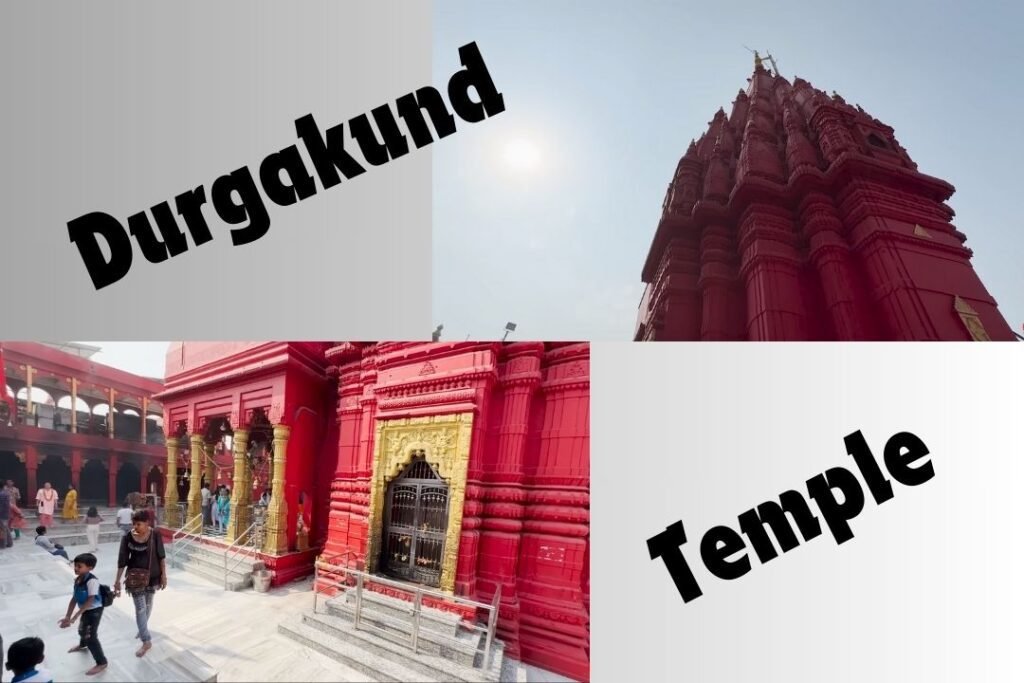
Durga Kund: The temple is situated next to a large pond (kund), which adds to its serene environment.
Festivals: The temple is particularly crowded during Navratri, a festival dedicated to the worship of Goddess Durga.
Sankat Mochan Temple

Deity: Dedicated to Lord Hanuman, the temple is a popular pilgrimage site in Varanasi.
Significance: It is believed that visiting this temple relieves devotees from troubles and obstacles.
History: The temple was founded by the renowned saint Tulsidas, who composed the Ramcharitmanas.
Offerings: Devotees offer sweets, particularly ladoos, and perform rituals to seek blessings.
Location: Situated near the Assi Ghat, the temple is easily accessible for tourists and pilgrims.
Banaras Hindu University (BHU)
Establishment: Founded by Pandit Madan Mohan Malaviya in 1916, BHU is one of Asia’s largest residential universities.
New Vishwanath Temple: The university campus houses the New Vishwanath Temple, a modern replica of the Kashi Vishwanath Temple.
Academic Excellence: BHU is renowned for its high academic standards and diverse range of disciplines.

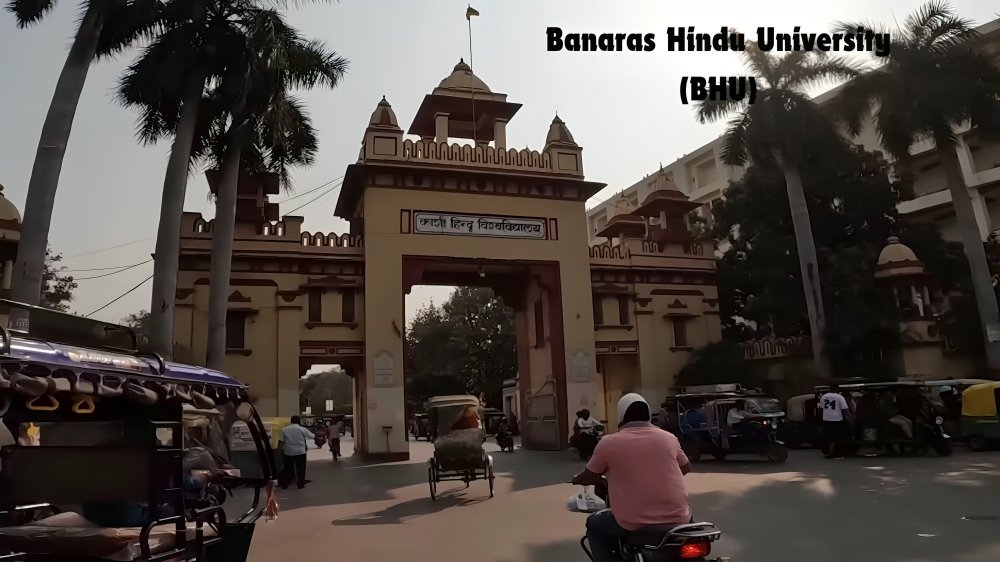
Cultural Hub: The university hosts numerous cultural events, seminars, and academic conferences, contributing to the city’s intellectual life.
Botanical Garden: The BHU campus includes a beautiful botanical garden, offering a serene environment for students and visitors.
Vishalakshi Shakti Peeth
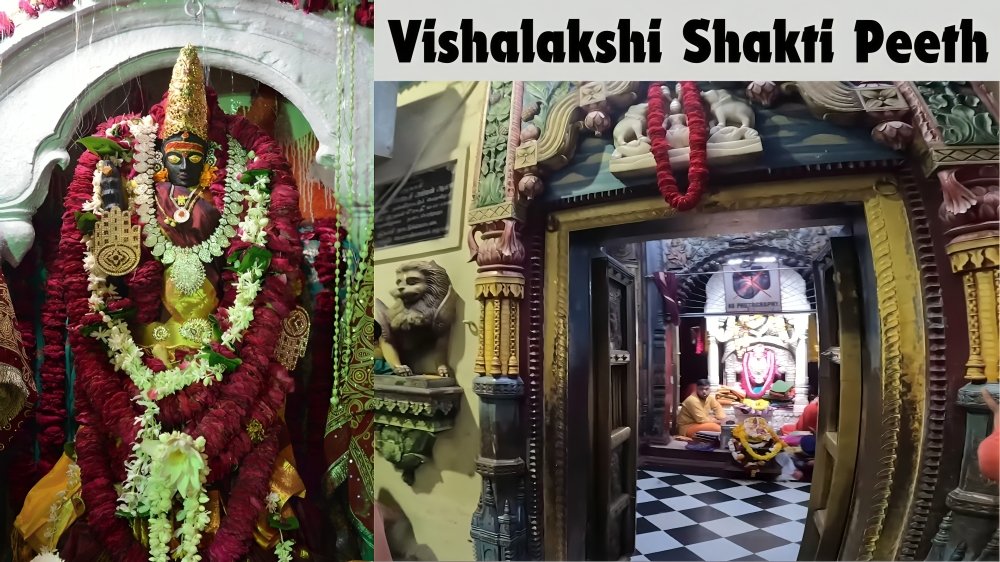
Significance: The temple is one of the 51 Shakti Peeths, sacred sites dedicated to Goddess Sati (Parvati).
Deity: Vishalakshi, meaning “large-eyed,” is another form of Goddess Parvati.
Location: Situated near the Kashi Vishwanath Temple, it is easily accessible for devotees.
Mythology: It is believed that the earrings of Goddess Sati fell at this site when her body was dismembered by Lord Vishnu’s Sudarshana Chakra.
Rituals: The temple is known for its elaborate rituals and celebrations during Navratri and other festivals dedicated to the goddess.
Bharat Mata Temple
Unique Deity: The temple is dedicated to Bharat Mata (Mother India) and features a large relief map of India carved in marble.
Inauguration: It was inaugurated by Mahatma Gandhi in 1936, emphasizing the importance of national unity.
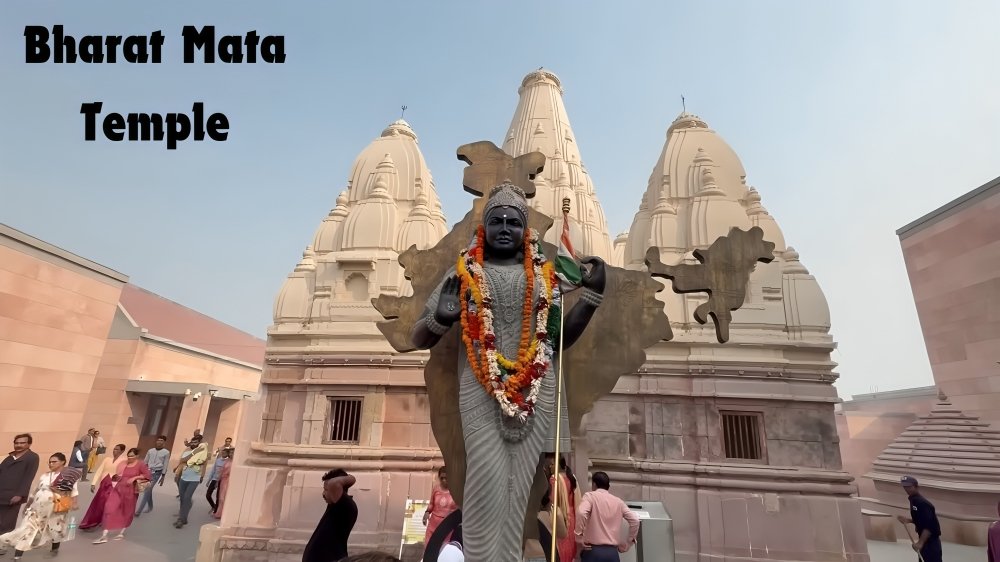
Architectural Design: Unlike other temples, it does not have any deity but celebrates the country itself.
Patriotic Symbol: The temple stands as a symbol of national pride and is visited by people from all over India.
Location: Located within the Mahatma Gandhi Kashi Vidyapith campus, it is easily accessible for visitors.
Ratneshwar Mahadev Temple
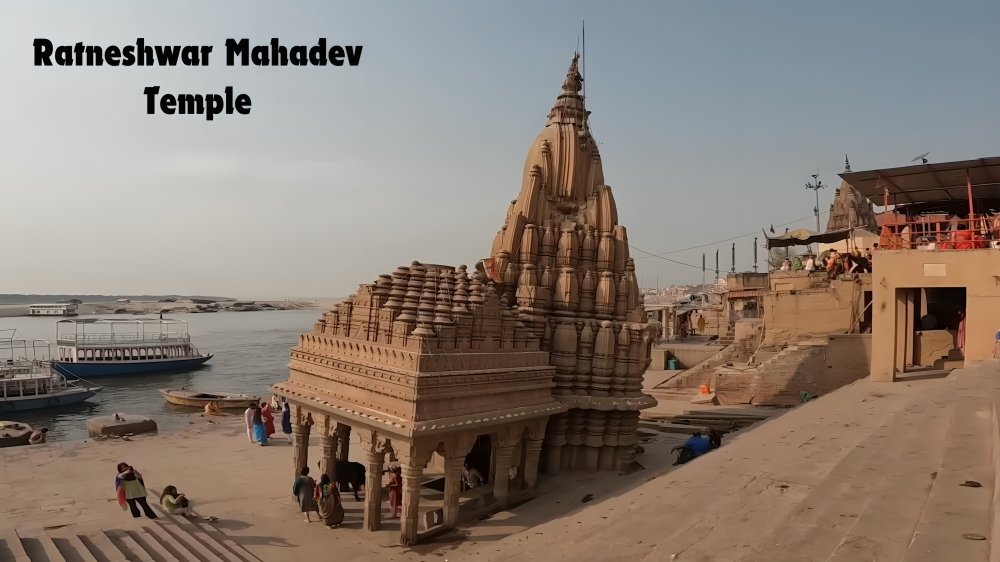
Unique Structure: The temple is famous for its 9 degree leaning structure, often compared to the Leaning Tower of Pisa.
Deity: Dedicated to Lord Shiva, the temple attracts numerous devotees and curious tourists.
Location: Situated on the Manikarnika Ghat, it offers a picturesque view of the Ganges.
Mythology: Legends suggest that the temple was built by a devoted servant of Lord Shiva, who was cursed to never be straight.
Photography: The unique architecture makes it a popular spot for photography enthusiasts.
Mrityunjay Mahadev Temple
Deity: Dedicated to Lord Shiva, particularly in his form as Mrityunjay, the conqueror of death.
Significance: The temple is famous for the Mahamrityunjaya Mantra, believed to protect devotees from untimely death and illnesses.
Architecture: The temple features traditional Hindu architecture with beautifully carved pillars and shrines.
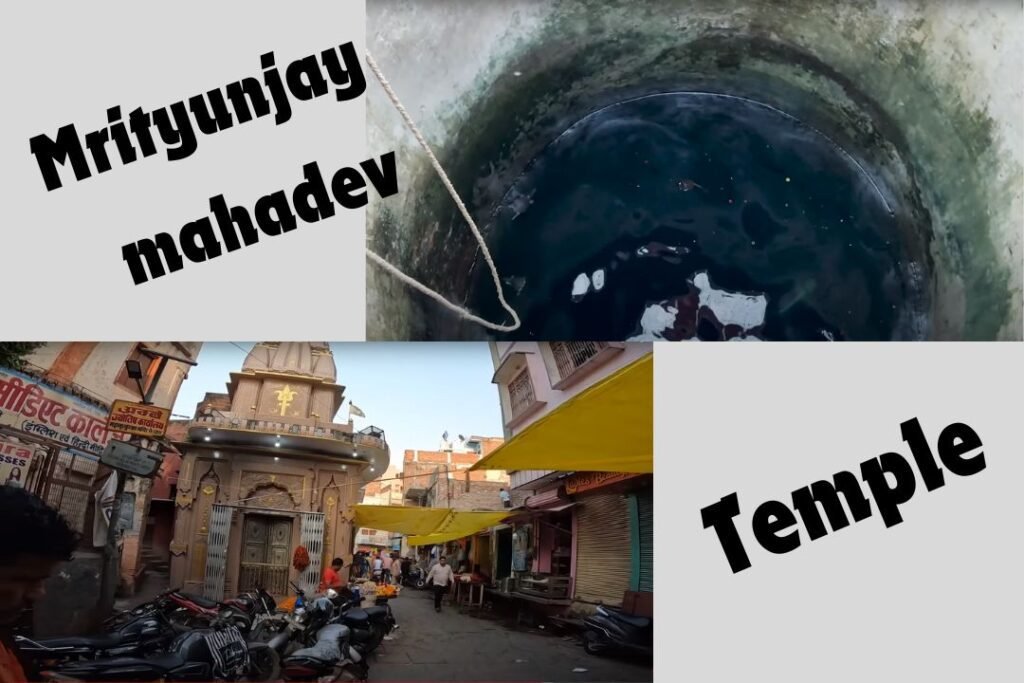
Holy Water: The temple has a well, whose water is considered to have medicinal properties.
Rituals: Devotees offer milk, water, and bilva leaves to the Shiva Lingam, seeking blessings for longevity and health.
Namo Ghat
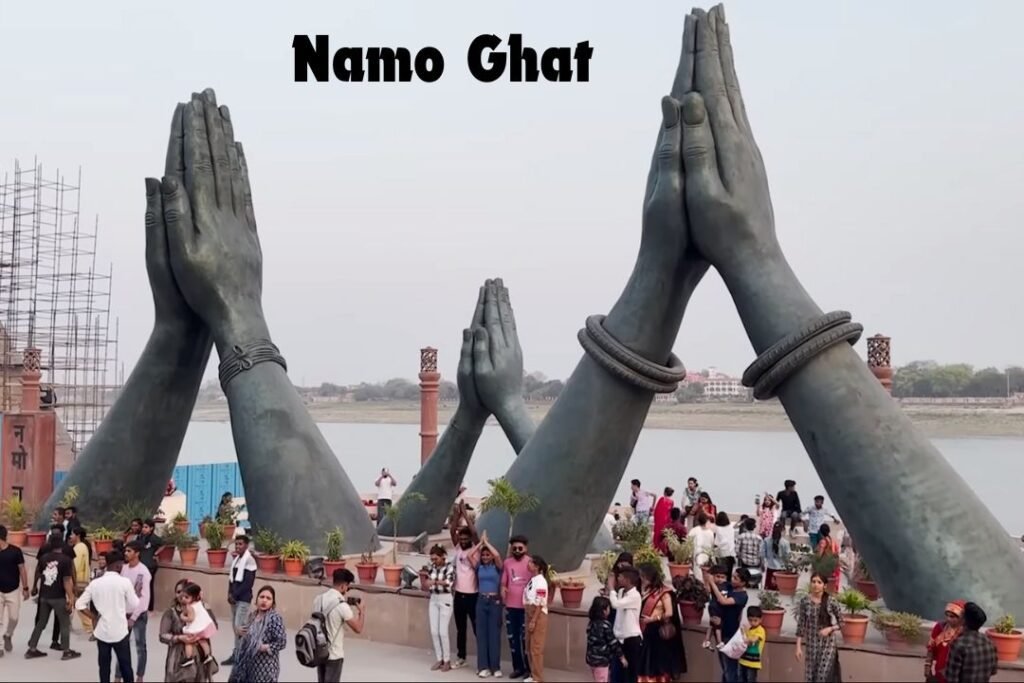
Events: The ghat is often used for cultural events, religious ceremonies, and public gatherings.
Accessibility: Located near the main city attractions, it is easily accessible for tourists and locals.
Modern Ghat: Namo Ghat is a recently developed ghat named after Prime Minister Narendra Modi.
Facilities: The ghat features modern amenities, clean surroundings, and is designed to accommodate large crowds.
Activities: Visitors can enjoy boat rides, take a dip in the Ganges, and participate in yoga sessions.
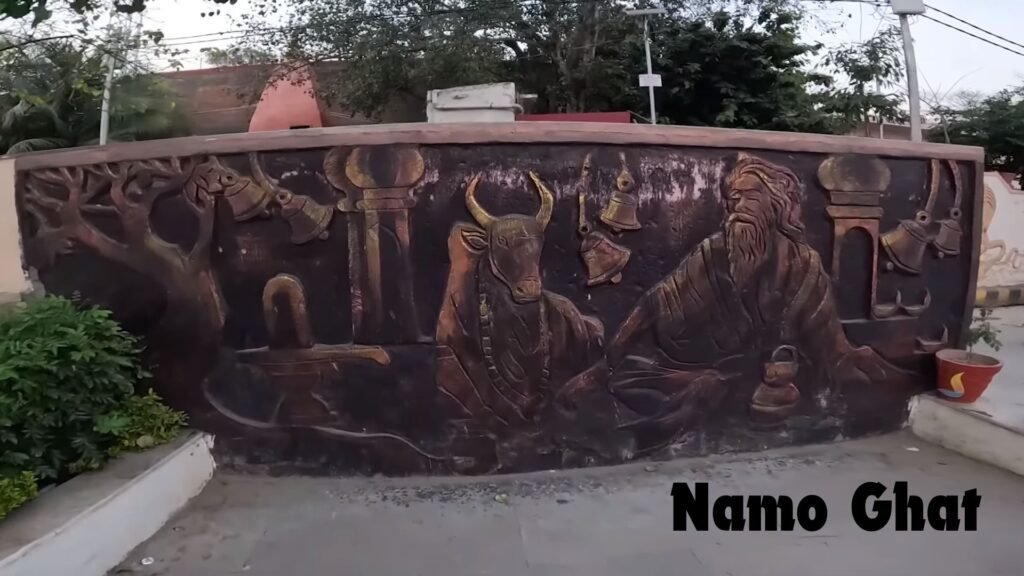
Assi Ghat
Popular Spot: Assi Ghat is one of the most popular ghats in Varanasi, frequented by tourists, locals, and pilgrims.
Morning Aarti: The ghat is known for its Subah-e-Banaras, a morning ritual involving yoga, music, and aarti.
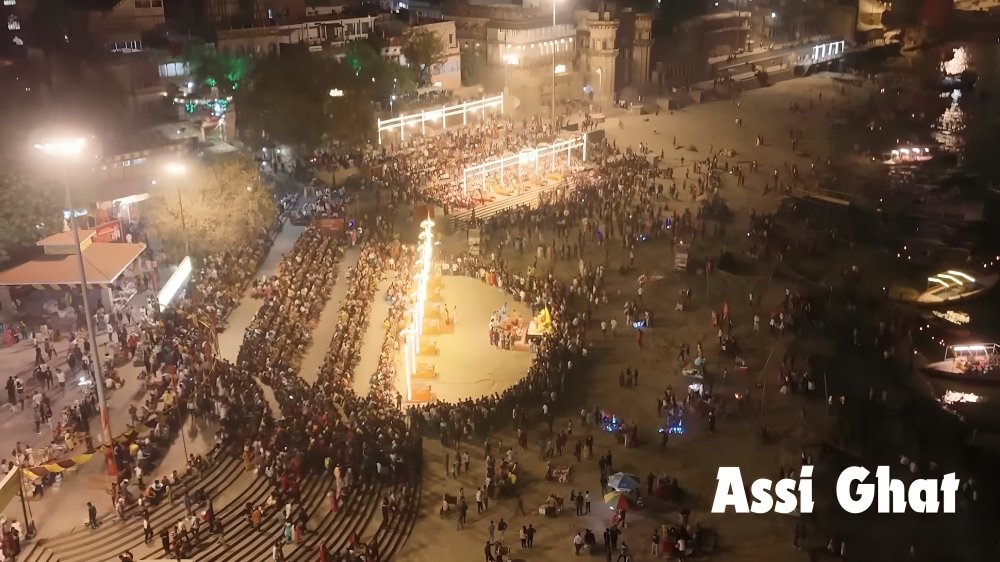
Cultural Hub: It is a cultural hub with numerous cafes, restaurants, and shops catering to tourists.
Spiritual Significance: The ghat is believed to be the spot where the Assi River meets the Ganges, making it a significant spiritual location.
Activities: Visitors can enjoy boat rides, take part in yoga sessions, and explore the nearby markets.
Tulsi Ghat

Literary Importance: Named after the poet-saint Tulsidas, who composed the Ramcharitmanas here.
Cultural Events: The ghat hosts various cultural and literary events, particularly during the Tulsi Festival.
Pilgrimage Site: It is a popular pilgrimage site, especially for devotees of Lord Rama.
Boat Rides: Visitors can take boat rides from this ghat to explore the river and other ghats.
Serene Atmosphere: Tulsi Ghat offers a relatively peaceful environment compared to the more crowded ghats.
Manikarnika Ghat
Cremation Ghat: Manikarnika Ghat is one of the oldest and most sacred cremation ghats in Varanasi.
Spiritual Belief: It is believed that those cremated here attain moksha (liberation from the cycle of rebirth).
Atmosphere: The ghat has a solemn and intense atmosphere, attracting pilgrims and spiritual seekers.
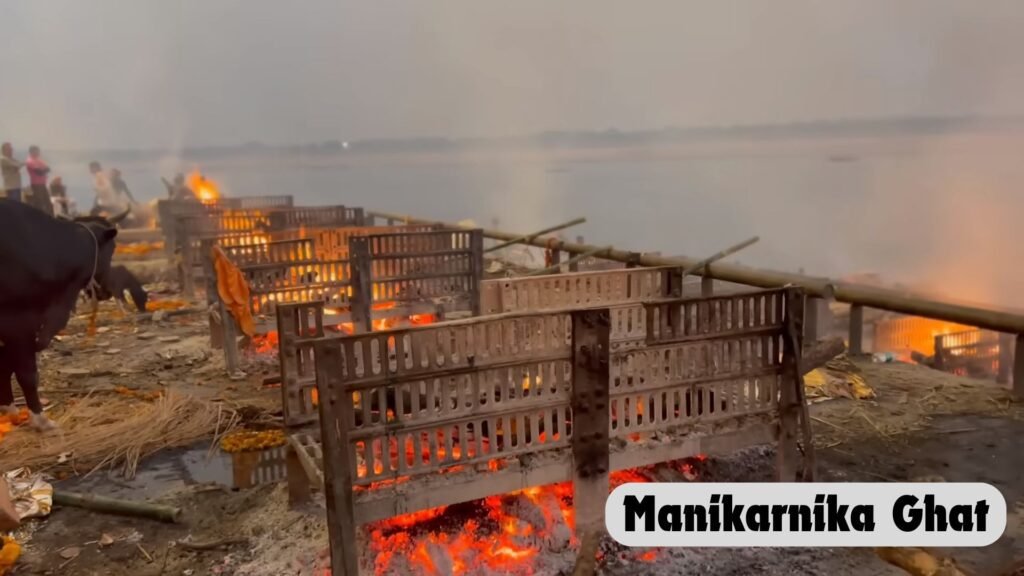
Historical Significance: The ghat is mentioned in ancient texts and has been a significant site for centuries.
Manikarnika Kund: A sacred pond nearby is believed to have been dug by Lord Vishnu and filled with his sweat.
Siddheshwari Mata Temple
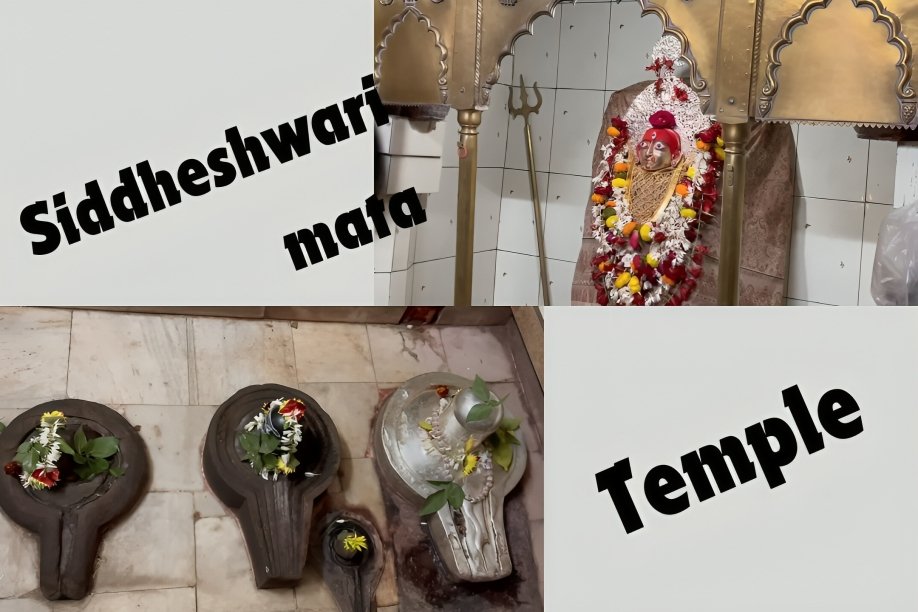
Deity: Dedicated to Goddess Siddheshwari, an incarnation of Goddess Parvati.
Significance: The temple is believed to grant devotees fulfillment of their wishes and success in endeavors.
Location: It is located in a quiet area, offering a serene environment for worship.
Festivals: The temple sees large crowds during Navratri and other festivals dedicated to the goddess.
Rituals: Devotees offer flowers, coconuts, and sweets to seek blessings from the goddess.
Sankat Harni Mata Temple
Deity: Dedicated to Sankat Harni Mata, believed to remove obstacles and grant wishes.
Significance: The temple is popular among locals for its miraculous powers in alleviating troubles.
Offerings: Devotees offer red clothes, sweets, and coconuts to the deity.
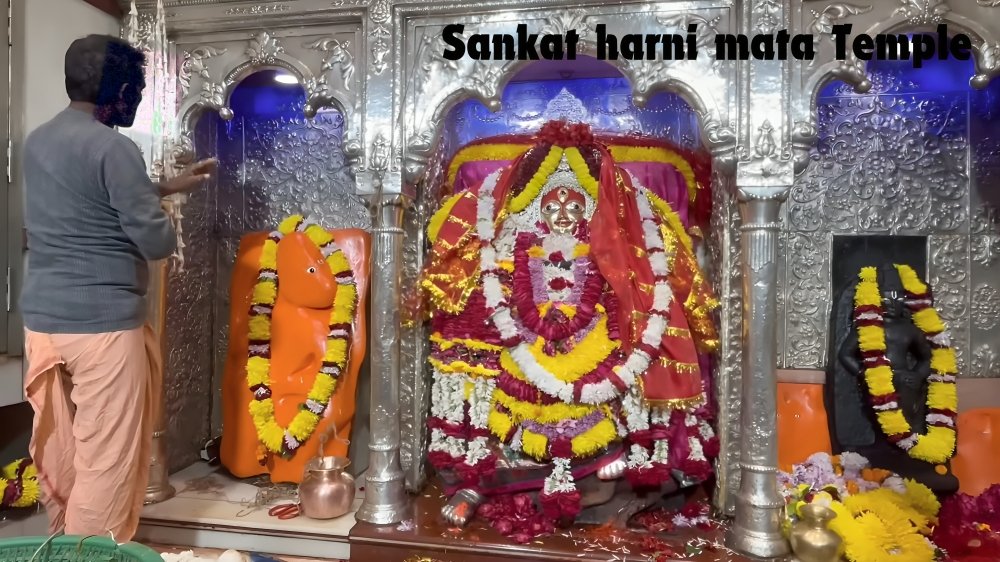
Festivals: The temple is particularly crowded during Navratri and other significant Hindu festivals.
Location: Situated in a peaceful area, it offers a quiet place for devotion and meditation.
Krishneshwar Mahadev Temple

Deity: Dedicated to Lord Shiva, known here as Krishneshwar Mahadev.
Historical Significance: The origin of the temple is believed to be ancient. Lord Krishna himself established this Shivlinga and it holds an important place in local beliefs.
Rituals: Regular rituals and aartis are conducted, attracting a steady stream of devotees.
Location: It is located near other significant temples, making it a convenient stop for pilgrims.
Atma Vishweshwar Mahadev Temple
Deity: Dedicated to Atma Vishweshwar, a form of Lord Shiva.
Spiritual Significance: It is believed that worshiping here helps in attaining self-realization and inner peace.
Rituals: Devotees offer milk, water, and bilva leaves to the Shiva Lingam.
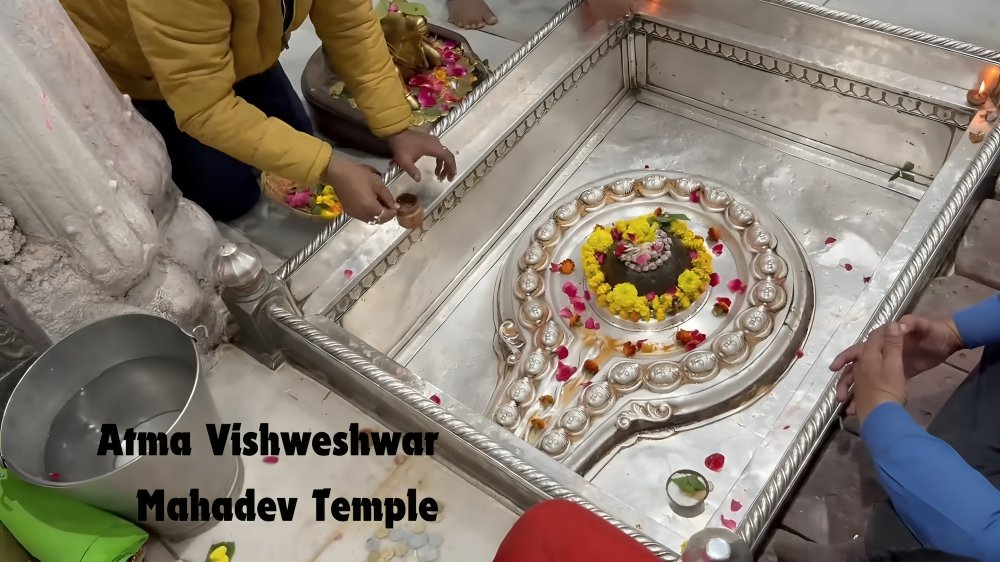
Location: Situated in a quiet part of the city, it offers a peaceful environment for worship.
ISKCON Temple
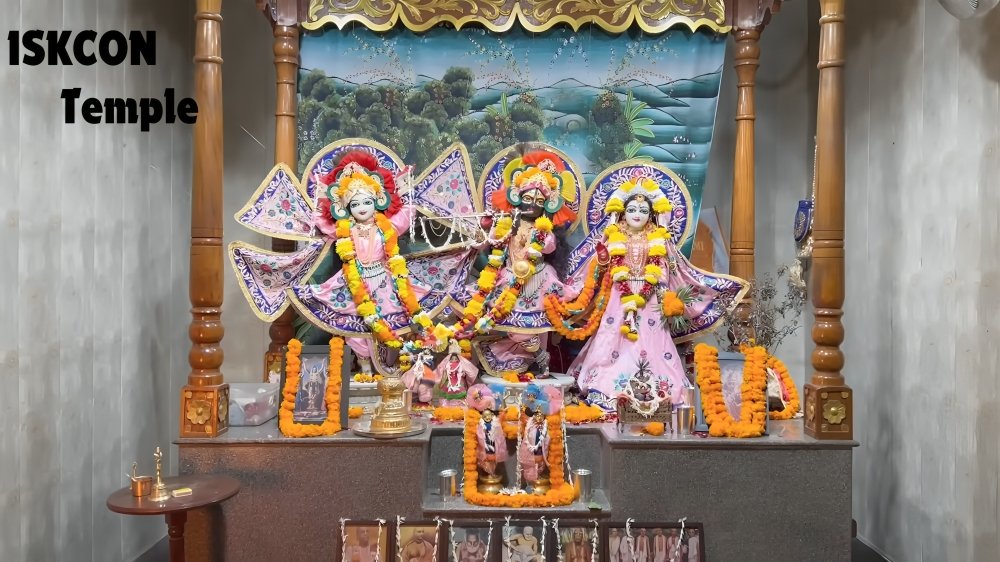
Deity: The temple is dedicated to Lord Krishna and Radha, following the teachings of the International Society for Krishna Consciousness (ISKCON).
Spiritual Programs: The temple conducts regular bhajans, kirtans, and lectures on the Bhagavad Gita and other scriptures.
Community Events: ISKCON Varanasi is known for its vibrant community activities and festivals, especially Janmashtami.
Prasadam: The temple offers delicious prasadam (sanctified food) to visitors, which is a major attraction.
Location: It is located in a serene area, providing a tranquil environment for devotees and visitors.
Bindu Madhav Temple
Deity: Dedicated to Lord Vishnu in his form as Bindu Madhav.
Historical Significance: The temple has ancient origins and is one of the oldest Vishnu temples in Varanasi.
Festivals: It is particularly crowded during festivals like Vaikuntha Ekadashi and Janmashtami.
Location: Situated near Panchganga Ghat, it is easily accessible for devotees.
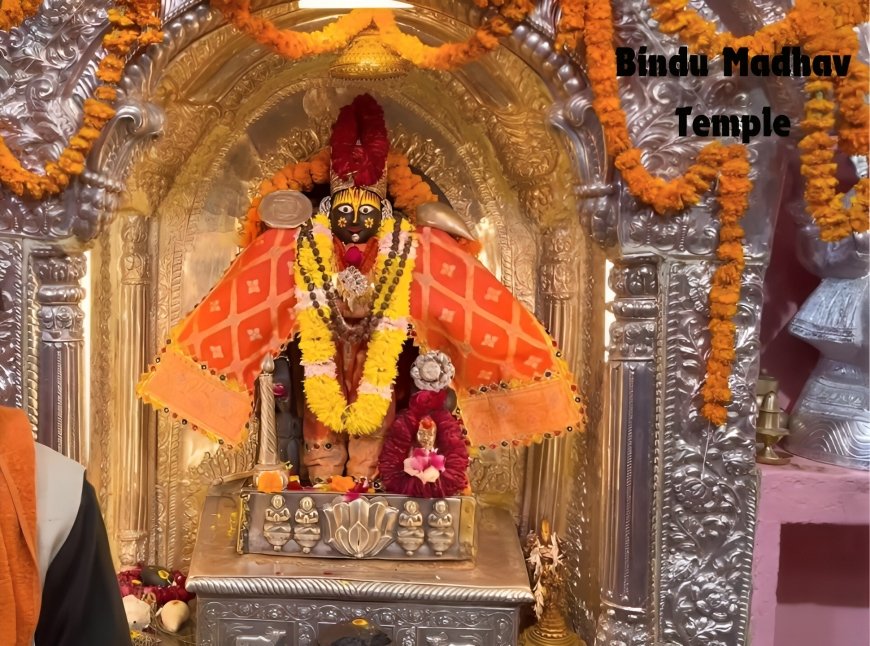
Chaitanya Mahaprabhu Temple
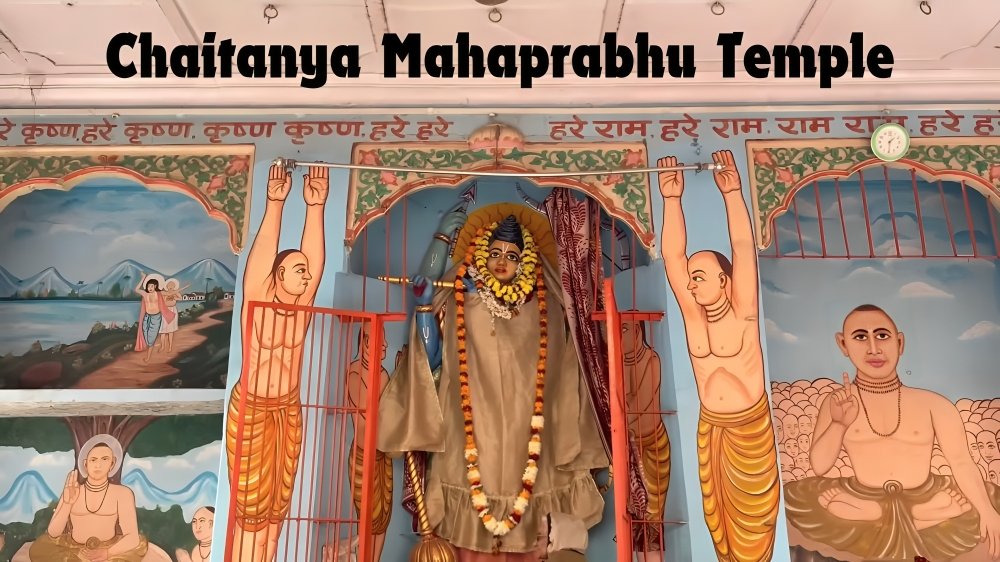
Deity: Dedicated to Chaitanya Mahaprabhu, a revered saint and founder of the Gaudiya Vaishnavism tradition.
Significance: The temple commemorates the saint’s visit to Varanasi and his teachings of devotion to Lord Krishna.
Rituals: Regular bhajans, kirtans, and readings of Chaitanya’s teachings are conducted.
Community Events: The temple hosts various cultural and spiritual events, attracting followers of Chaitanya Mahaprabhu.
Location: Situated in a peaceful area, it offers a serene environment for meditation and devotion.
Sarnath
Located about 10 km from Varanasi, Sarnath is one of the four key sites on the Buddhist circuit. Sarnath is the place where Lord Buddha gave his first sermon after attaining enlightenment under a pipal tree. Sarnath is home to several stupas, monasteries, and the Ashoka Pillar. The Dhamek Stupa and the Sarnath Archaeological Museum are major attractions.
How to Reach
By Air
Nearest Airport: The closest airport to Kashi Vishwanath Temple is Lal Bahadur Shastri International Airport (VNS), located approximately 26 km from the temple.
Connectivity: The airport is well-connected to major Indian cities like Delhi, Mumbai, Kolkata, and Hyderabad, with regular flights operated by various airlines.
Transfers: From the airport, you can hire a taxi or take a pre-paid cab to reach the temple. It usually takes 45 minutes to an hour to reach the temple depending on the traffic.
By Train
Varanasi Junction: Also known as Varanasi Cantt, this is the main railway station, located about 5 km from Kashi Vishwanath Temple.
Mughalsarai Junction: Another major railway station, located about 16 km from Varanasi, serving as a crucial junction for trains coming from different parts of India.
Connectivity: Both stations are well-connected to cities across India, including Delhi, Kolkata, Mumbai, Chennai, and many others.
Transfers: From the railway stations, you can hire an auto-rickshaw, cycle-rickshaw, or taxi to reach the temple. The journey from Varanasi Junction to the temple typically takes around 20-30 minutes.
By Road
Bus Services: Varanasi is well-connected by road to major cities in Uttar Pradesh and neighboring states. The Uttar Pradesh State Road Transport Corporation (UPSRTC) operates regular bus services to and from Varanasi.
Private Vehicles: You can also drive to Varanasi using the well-maintained network of national highways. The city is accessible via NH19 (formerly NH2) and NH31.
By Water
River Transport: While not a common mode of transport, some visitors prefer to arrive by boat on the Ganges River. Varanasi has numerous ghats where boats can dock, and from there, you can walk to the temple.
Boat Rides: Boat rides along the Ganges are a popular activity for tourists, offering a unique view of the ghats and the city’s skyline.
Local Transport
Once in Varanasi, local transport options like auto-rickshaws, cycle-rickshaws, and taxis are available to take you to Kashi Vishwanath Temple.
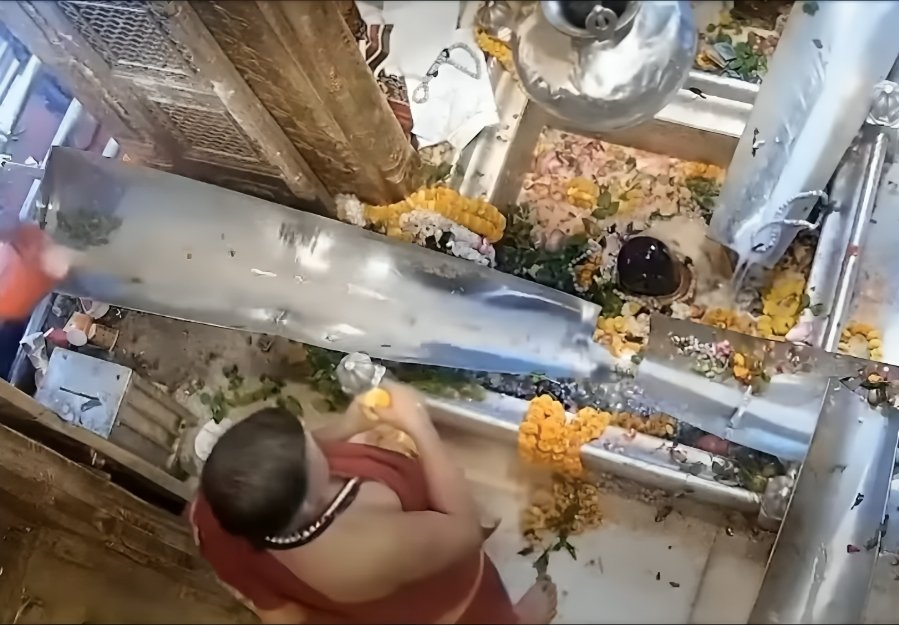

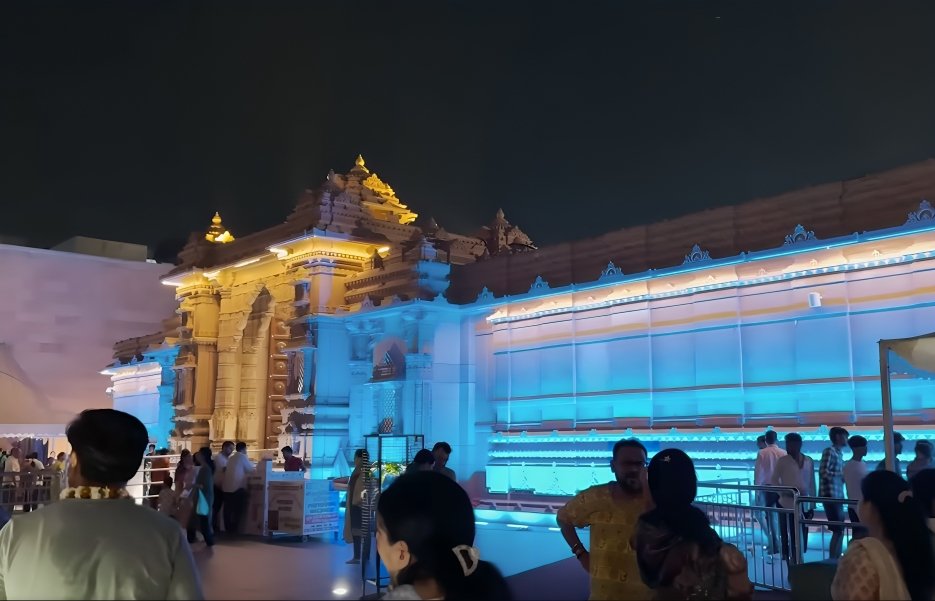
Accommodations
Luxury Hotels
- Taj Nadesar Palace: A luxurious option offering heritage rooms and suites with modern amenities. Located about 3 km from Kashi Vishwanath Temple, it provides a serene and royal experience.
- Hotel Surya: Known for its elegant rooms and rooftop terrace with a view of the city. It’s situated around 2 km from the temple.
- Brijrama Palace: Located on the Darbhanga Ghat, this heritage property offers luxurious rooms and a stunning view of the Ganges River. It’s about 2 km from the temple.
Mid-Range Hotels
- Hotel Ganges View: Located near Assi Ghat, this hotel offers comfortable rooms and a rooftop restaurant with views of the Ganges River. It’s about 3 km from Kashi Vishwanath Temple.
- Hotel Temple On Ganges: Situated close to Dashashwamedh Ghat, this hotel provides easy access to the main attractions of Varanasi. It offers cozy rooms and personalized service, around 1.5 km from the temple.
Budget Hotels
- Hotel Alka: A budget-friendly option near Dashashwamedh Ghat and within walking distance of Kashi Vishwanath Temple. It’s ideal for travelers looking for affordable accommodation.
- Hotel Temple View: Located near the temple complex, this budget hotel provides simple rooms and easy access to the spiritual heart of Varanasi. It’s a convenient choice for pilgrims and tourists.
Guesthouses and Dharamshalas
- Shri Kashi Vishwanath Temple Trust Dharamshala: Managed by the temple trust, this accommodation offers basic facilities and is located close to Kashi Vishwanath Temple. It’s suitable for pilgrims seeking economical stay options.
- Jain Dharamshala: Another budget-friendly option offering clean rooms and essential amenities. It’s located near the temple complex, providing convenience for visitors.
- Ganpati Guest House: Situated near Dashashwamedh Ghat, this guest house offers river-facing rooms and a peaceful ambiance. It’s around 1.5 km from Kashi Vishwanath Temple.
Local Cuisine
Traditional Dishes
Banarasi Chaat: A must-try street food, Banarasi chaat includes varieties like tamatar chaat (spicy tomato chaat), aloo chaat (potato chaat), and palak chaat (spinach chaat). These are typically tangy, spicy, and topped with various chutneys and crunchy toppings.
Kachori Sabzi: Deep-fried kachoris served with a spicy potato curry (sabzi) is a popular breakfast or snack option in Varanasi. The kachoris are filled with a mixture of lentils and spices.
Malaiyyo: A delicate winter specialty, Malaiyyo is a frothy dessert made from milk, often flavored with saffron and garnished with dry fruits. It is traditionally served during the cold months.
Thandai: A refreshing drink made from a mixture of milk, almonds, fennel seeds, rose petals, and cardamom. Thandai is especially popular during festivals like Holi and Mahashivaratri.
Baati Chokha: A rustic dish made from baked wheat balls (baati) served with mashed spiced vegetables (chokha), typically made from roasted eggplant, tomatoes, and potatoes.
Litti Chokha: A savory dish from Bihar and eastern Uttar Pradesh, Litti is dough balls stuffed with roasted gram flour and served with chokha, a mashed vegetable preparation.
Samosa: Deep-fried pastry filled with spiced potatoes and peas, often served with tangy tamarind chutney.
Sweets and Desserts
Malai Paan: A creamy and rich dessert made from condensed milk, sugar, and flavored with cardamom, served in the form of a paan leaf.
Rabri: A traditional sweet dish made from condensed milk, sugar, and garnished with dry fruits. It has a thick consistency and is often served chilled.
Launglata: Deep-fried sweet dumplings made from refined flour (maida), flavored with cloves (laung), and soaked in sugar syrup.
Banarasi Paan: Varanasi is famous for its paan (betel leaf) preparations, which are offered in various flavors and ingredients, often including areca nut, slaked lime, and various sweeteners.
Jalebi: Crispy, deep-fried spirals of batter soaked in sugar syrup, enjoyed hot and fresh from the street vendors.
Travel tips and Safety advice
Temple Timings: Kashi Vishwanath Temple is open from early morning to late evening. It’s advisable to visit early in the morning or late in the evening to avoid crowds and experience the rituals peacefully.
Dress Code: While there’s no strict dress code, it’s respectful to wear modest attire covering shoulders and knees when visiting religious sites.
Footwear: Shoes are not allowed inside the temple complex. There are facilities outside the temple where you can store your footwear safely.
Photography: Photography is usually not allowed inside the temple premises. Respect the rules and cultural sensitivities regarding photography.
Local Guides: Consider hiring a local guide who can provide insights into the temple’s history, rituals, and local customs. This can increase your experience and understanding.
Cash and ATMs: Carry sufficient cash as ATMs may not be easily accessible near the temple complex. It’s advisable to keep smaller denominations for donations and purchases.
Respect Local Customs: Varanasi is a sacred city with deeply rooted traditions. Respect local customs, practices, and religious sentiments during your visit.
Pickpocketing: Be vigilant of pickpockets, especially in crowded areas near the temple and ghats. Keep your belongings secure and avoid displaying valuables openly.
Traffic and Roads: Varanasi streets can be crowded and chaotic. Be cautious while crossing roads and use designated crossings where available.
Health and Hygiene: Maintain good hygiene practices, especially when consuming street food. Drink bottled water and eat at clean, reputable eateries to avoid food-related illnesses.
Ghat Safety: If visiting the ghats, be cautious of slippery steps and fast currents in the river. Avoid venturing into the water unless with a reputable boat service for a river tour.
Travel Insurance: Consider purchasing travel insurance that covers medical emergencies, theft, and trip cancellations to mitigate any potential risks during your visit.
Weather Conditions: Varanasi experiences extreme weather conditions, with hot summers and chilly winters. Plan your visit according to weather forecasts and carry appropriate clothing.
Conclusion
Kashi Vishwanath Temple is more than just a temple; it’s a symbol of spiritual heritage and resilience. A visit to this sacred shrine offers not just a glimpse into the divine but also a deep connection with the spiritual heritage of India. Whether you are a pilgrim seeking blessings, a history enthusiast exploring ancient architecture, or a traveler absorbing the vibrant culture of Varanasi, Kashi Vishwanath promises an unforgettable and transformative experience.

Frequently Asked Questions (FAQs)
What is the significance of Kashi Vishwanath Temple?
Kashi Vishwanath Temple is one of the largest and holiest temples in Hinduism, dedicated to Lord Shiva. It is one of the twelve Jyotirlingas, where Shiva is worshipped in the form of a lingam of light. The temple holds immense religious importance and is a major pilgrimage site for devotees from all over India.
Where is Kashi Vishwanath Temple located?
The temple is located in Varanasi (also known as Kashi or Benares), Uttar Pradesh, India. It is situated on the western bank of the holy river Ganges.
What are the temple timings?
The temple opens at 3:00 AM and closes at 11:00 PM after night Shayan Aarti. The specific timings for various rituals and aartis can vary, so it’s advisable to check the schedule in advance or visit the temple’s official website for the latest information.
How can I reach Kashi Vishwanath Temple?
Kashi Vishwanath Temple is easily accessible by air, train and road. The nearest airport is Lal Bahadur Shastri International Airport, about 26 km away. Varanasi Junction is the closest railway station, located about 5 km from the temple. Auto-rickshaws, cycle-rickshaws, and taxis are available for local transportation.
Is there an entry fee for Kashi Vishwanath Temple?
There is no entry fee to visit the temple. However, there may be charges for special darshan or pooja services.
Are there any specific dress code requirements?
There is no strict dress code in this temple, but it is recommended to dress modestly and respectfully to maintain the dignity of the temple. Visitors should wear clothes that cover their shoulders and knees.
Are mobile phones and cameras allowed inside the temple?
Carrying mobile phones, cameras and any other electronic devices inside the temple premises is prohibited. There are facilities outside the temple where you can safely deposit these items before entering.
Can non-Hindus visit Kashi Vishwanath Temple?
The temple primarily caters to Hindu worshippers, but visitors of other faiths are generally allowed to visit. It is important to respect the religious practices and maintain decorum inside the temple.
What are the main rituals and aartis conducted at the temple?
The temple conducts several rituals and aartis throughout the day. The main aartis include Mangala Aarti (early morning), Bhog Aarti (afternoon), Sandhya Aarti (evening), and Shringar Aarti (night). Each aarti has specific timings and significance.
Are there facilities for the elderly and differently-abled?
The temple provides facilities such as ramps and wheelchairs for the elderly and differently-abled visitors to ensure easy access to the temple premises.
Is there a place to store shoes and personal belongings?
Yes, there are designated areas near the temple entrance where you can safely store your shoes and personal belongings before entering the temple.
Are there accommodation options near the temple?
Yes, there are several accommodation options ranging from luxury hotels to budget guesthouses and dharamshalas near the temple. Popular choices include Hotel Alka, Ganpati Guest House, and Shri Kashi Vishwanath Temple Trust Dharamshala.
Can I perform special poojas or rituals at the temple?
Yes, the temple offers various special poojas and rituals that devotees can book. These services can be arranged at the temple’s office or through their official website.

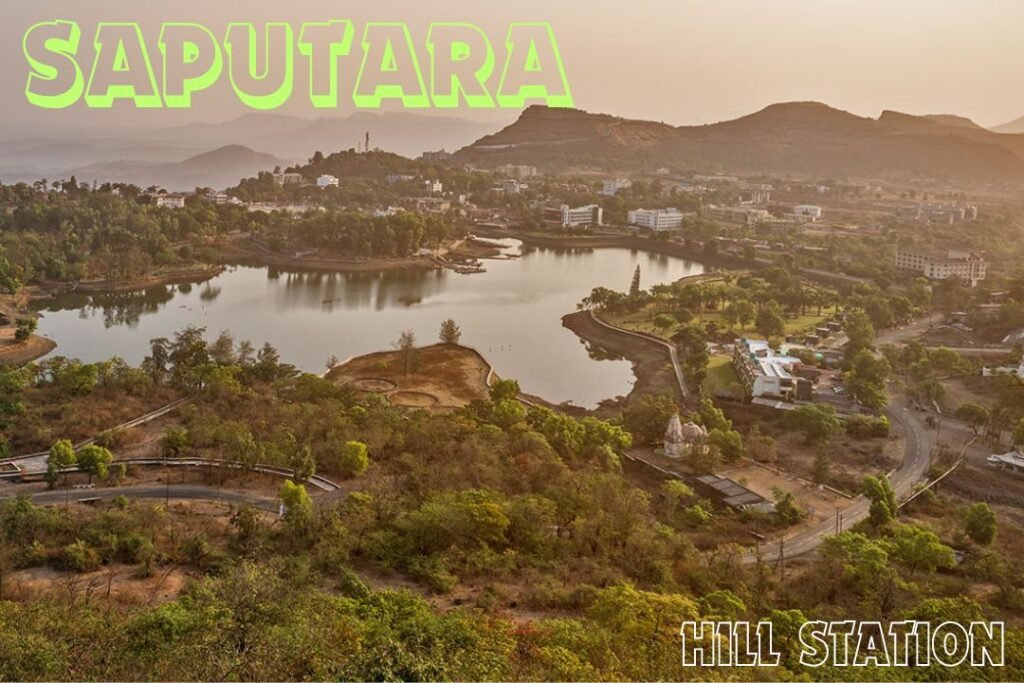
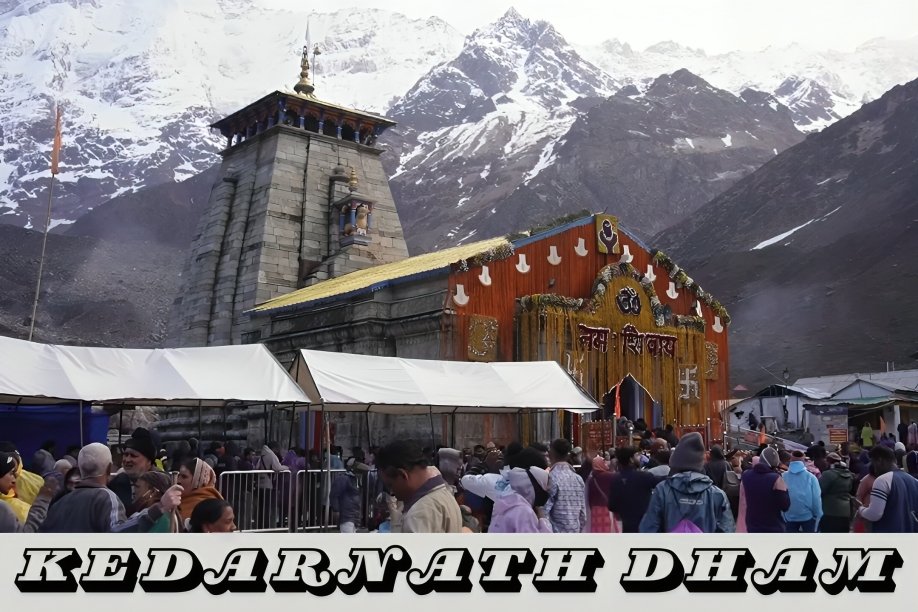
Pingback: Trimbakeshwar Jyotirlinga: Discover the timeless wonders - GujjuTraveling
Pingback: Grishneshwar Jyotirlinga: Top 6 Spiritual Experiences - GujjuTraveling